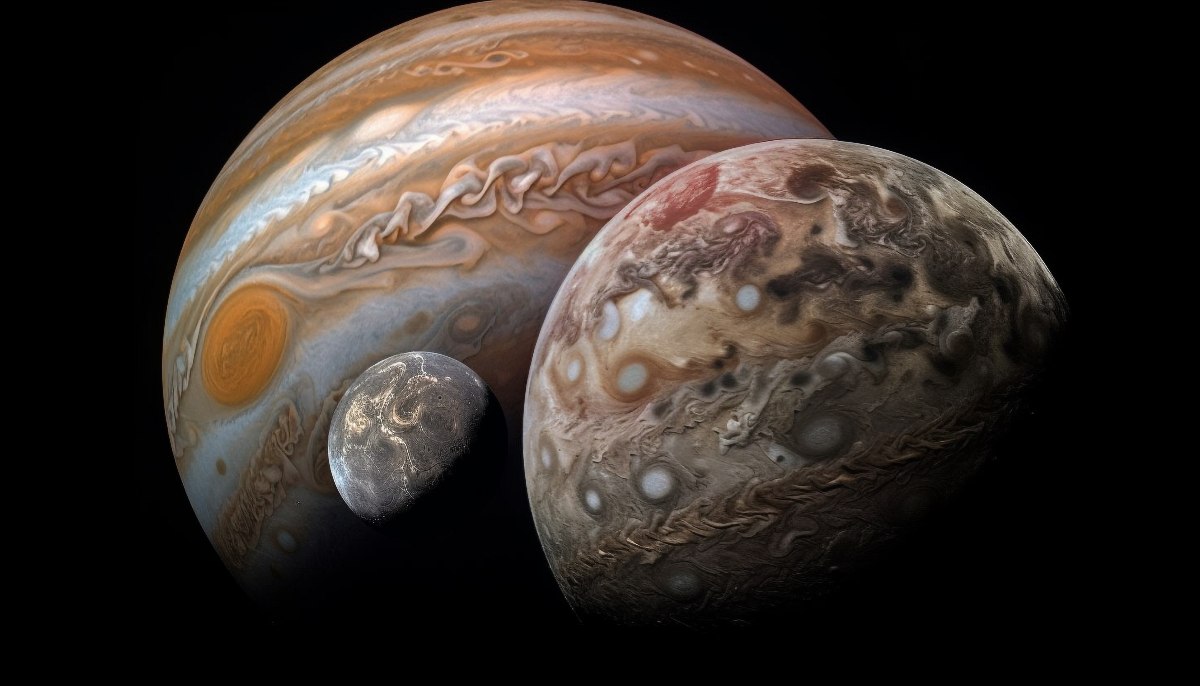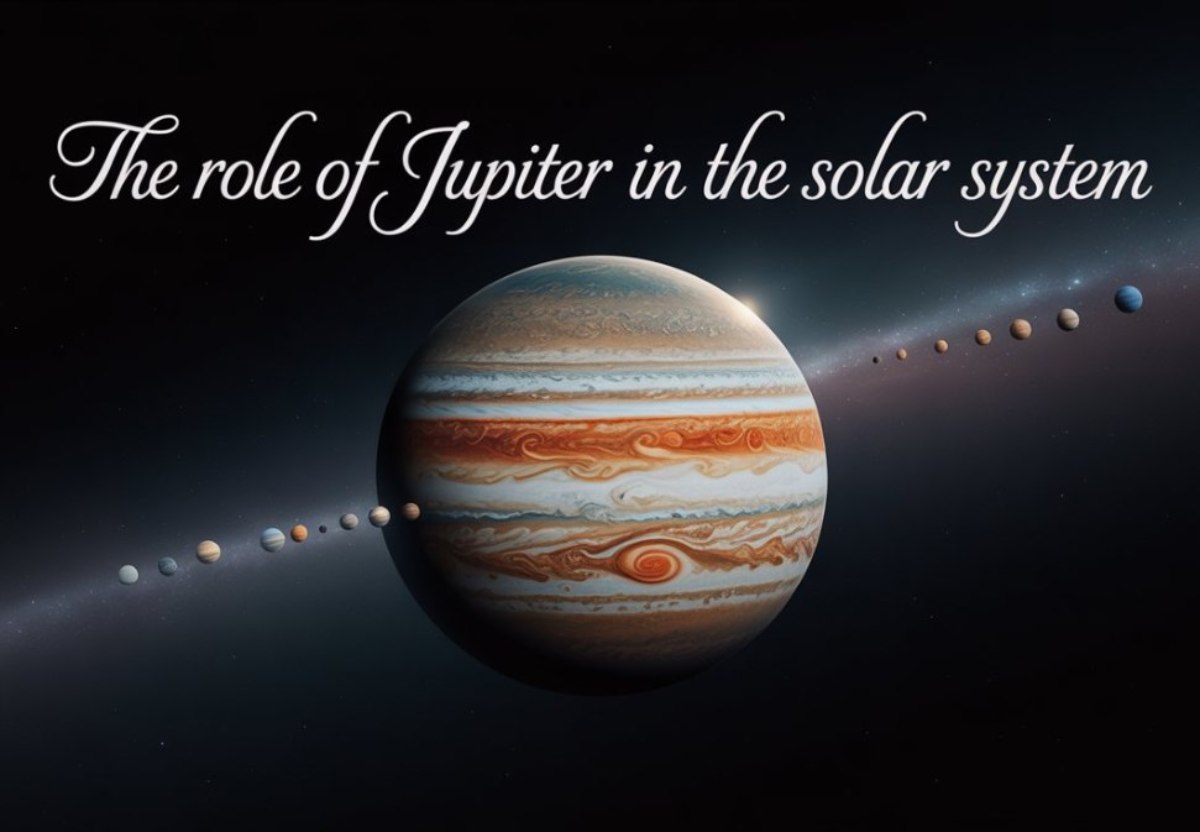Jupiter, the biggest planet in our solar system, has captivated astronomers, scientists, and curious minds for centuries. Known for its colossal storms, powerful gravity, and breathtaking scale, Jupiter often sparks the question: How many Earths can fit in Jupiter?
The answer is both mind-blowing and humbling. If Jupiter were hollow, it could hold about 1,300 Earths inside its vast volume. This single fact alone highlights just how immense Jupiter truly is compared to our small, yet vibrant, home planet.
In this article, “How many Earths can fit in Jupiter?”, we’ll dive deep into Jupiter’s size, structure, and fascinating comparisons with Earth. We’ll also explore why understanding this gas giant is essential for grasping the scale of our solar system.
Introduction to Jupiter
Jupiter is the fifth planet from the Sun and belongs to the family of gas giants. Unlike Earth, it has no solid surface, as it is mainly formed of hydrogen and helium. Its vast size and unique features, such as the Great Red Spot, make it stand out in the night sky.
Some astonishing facts about Jupiter:
- It is 11 times wider than Earth.
- Its mass is 318 times greater than Earth’s.
- It has 79+ known moons (including Ganymede, the largest moon in the solar system).
- Jupiter’s magnetic field is the strongest of all planets.
- Its storms have lasted for centuries, with the Great Red Spot steaming for more than 350 years.
But the question remains: How many Earths can fit in Jupiter? Let’s explore the numbers.
How Many Earths Can Fit in Jupiter?

The straightforward answer: Around 1,300 Earths can fit inside Jupiter’s volume.
Here’s how the calculation works:
- Earth volume: 1.08 × 10¹² km³
- Jupiter volume: 1.43 × 10¹⁵ km³
When you divide Jupiter’s volume by Earth’s volume, the result is roughly 1,321. Scientists often round this to 1,300 Earths, which gives us an easy way to understand the incredible size difference.
This number alone is enough to make us realize just how massive Jupiter really is compared to our home planet.
Earth vs. Jupiter: A Side-by-Side Comparison

To truly visualize how many Earths can fit in Jupiter, let’s compare some key attributes:
| Attribute | Earth | Jupiter | Difference |
|---|---|---|---|
| Diameter | 12,742 km | 139,820 km | ~11x wider |
| Mass | 5.97 × 10²⁴ kg | 1.90 × 10²⁷ kg | ~318x heavier |
| Volume | 1.08 × 10¹² km³ | 1.43 × 10¹⁵ km³ | ~1,321x larger |
| Density | 5.52 g/cm³ | 1.33 g/cm³ | Lower (gas giant) |
| Surface Gravity | 9.81 m/s² | 24.79 m/s² | ~2.5x stronger |
| Moons | 1 | 79+ | Vastly more |
| Day Length | 24 hours | ~10 hours | Much shorter |
This table reveals the unimaginable scale of Jupiter and why it can hold so many Earths inside its vast volume.
Why Jupiter is So Much Larger Than Earth
To understand how many Earths can fit in Jupiter, we must explore why Jupiter is so much bigger:
- Composition – Jupiter is mainly made of hydrogen and helium, allowing it to gather vast amounts of gas during its formation.
- Formation – As the solar system developed, Jupiter’s strong gravity pulled in massive amounts of material.
- Gas Giant Nature – Unlike Earth, which is rocky and solid, Jupiter is a gas giant, meaning its size is not limited by surface boundaries.
- Role in the Solar System – Jupiter’s immense gravity helps stabilize orbits, protecting inner planets from comets and asteroids.
The Immense Size of Jupiter
To give perspective:
- If Earth were the altitude of a grape, Jupiter would be the altitude of a basketball.
- You could line up 11 Earths across Jupiter’s diameter.
- Jupiter’s mass is 2.5 times greater than all the other planets combined.
So, when we ask how many Earths can fit in Jupiter, we’re really highlighting just how unique and dominant Jupiter is within our solar system.
Jupiter Density and Gravity
Even though 1,300 Earths can fit in Jupiter, it doesn’t mean Jupiter is solid or dense like Earth. In fact:
- Jupiter’s density is only 1.33 g/cm³, compared to Earth’s 5.52 g/cm³.
- This is because Jupiter is made of gases, not rock.
- Its surface gravity, however, is still about 2.5 times stronger than Earth’s, making it extremely powerful in terms of pulling objects in.
This balance between low density and massive gravity is why Jupiter remains such a fascinating planet to study.
The Role of Jupiter in the Solar System

Jupiter’s sheer size makes it the protector of the inner planets. Its powerful gravity attracts or deflects asteroids and comets that could otherwise strike Earth.
Some key roles Jupiter plays:
- Acts as a cosmic shield for Earth.
- Controls the orbits of many smaller objects in the asteroid belt.
- Generates intense magnetospheres that affect nearby space.
- Provides insight into planetary formation for astronomers.
Without Jupiter, Earth’s history might have been very different.
4 Key Comparisons: Earth vs. Jupiter
Here’s another way to view the massive differences:
| Feature | Earth | Jupiter |
|---|---|---|
| Atmosphere | Nitrogen & Oxygen | Hydrogen & Helium |
| Weather | Rain, snow, storms | Giant storms & winds |
| Rotation Speed | 24 hours | 10 hours |
| Magnetic Field | Moderate | Extremely powerful |
These details make the answer to how many Earths can fit in Jupiter even more astonishing.
Conclusion
So, how many Earths can fit in Jupiter? The definitive answer is about 1,300 Earths. Jupiter’s enormous size, massive volume, and incredible gravitational force make it the king of planets in our solar system.
Studying Jupiter not only gives us a sense of viewpoint about our small place in the cosmos but also highlights the fascinating diversity of planetary systems. When we ask how many Earths can fit in Jupiter, the answer—around 1,300 Earths—is one of those astonished facts that remind us of the unimaginable scale of our universe. From its Great Red Spot storm, big enough to engulf Earth, to its mass being greater than all the other planets combined, Jupiter proves why it is the true giant of our solar system.
Frequently Asked Questions(FAQs)
How many Earths can fit in Jupiter?
Around 1,300 Earths can fit in Jupiter, based on its massive volume compared to Earth’s. This incredible fact highlights the enormous scale difference between the two planets.
Why is Jupiter so much bigger than Earth?
Jupiter is primarily made of hydrogen and helium, which allowed it to accumulate massive amounts of material during formation, making it much bigger than Earth. Its composition as a gas giant played a key role in its growth.
Can humans stand on Jupiter?
No, Jupiter has no solid surface. It is a gas giant, so humans cannot stand on it. Even spacecraft cannot land there due to the intense pressure and atmosphere.
Is Jupiter bigger than all other planets combined?
Yes, Jupiter’s mass is greater than all the other planets in the solar system combined, showcasing its dominance. This makes it the true giant of our solar system.
What is the Great Red Spot?
The Great Red Spot is a giant storm on Jupiter, larger than Earth itself, that has been raging for centuries. Scientists believe it may have existed for more than 350 years.





